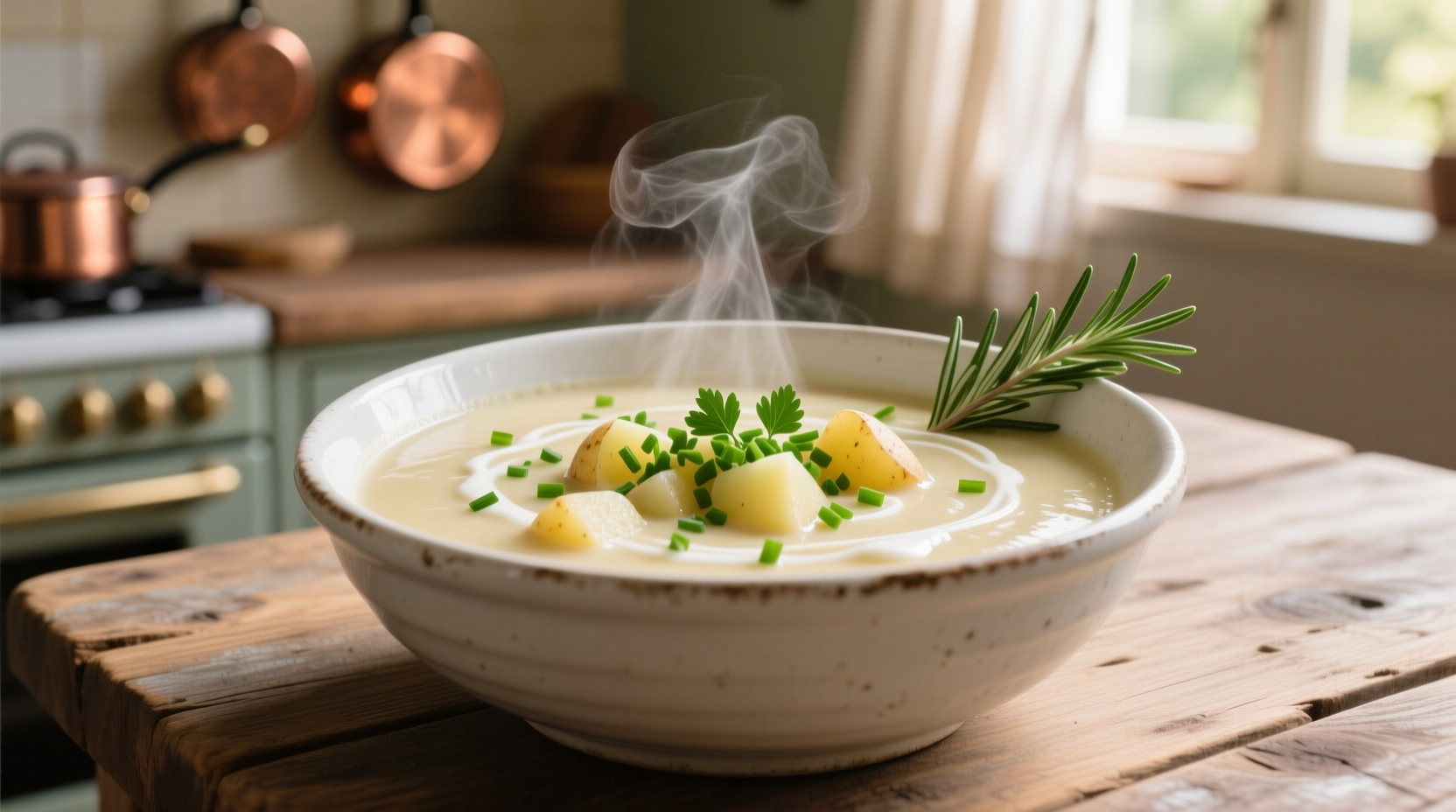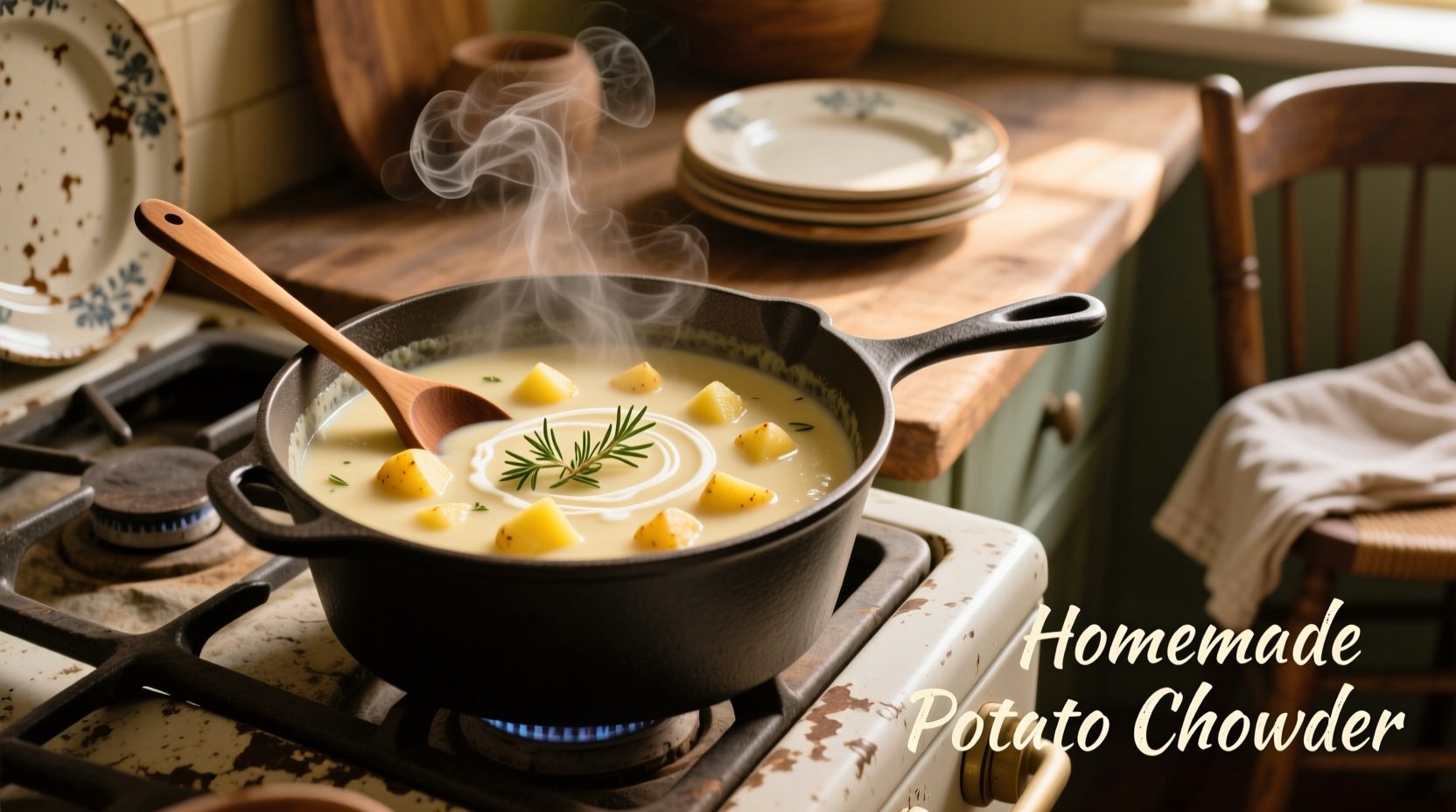The perfect potato chowder combines creamy texture, balanced seasoning, and hearty ingredients for a satisfying meal. This guide delivers a foolproof recipe with professional chef techniques, regional variations, and science-backed tips to create restaurant-quality chowder at home—no specialty equipment required.
Why Potato Chowder Deserves a Place in Your Culinary Repertoire
Potato chowder stands as one of America's most beloved comfort foods, with roots tracing back to 19th century New England fishing communities. Unlike basic mashed potatoes or simple soups, authentic chowder achieves its distinctive character through a careful balance of creamy texture and chunky vegetable components. Food historians at the Food Industry Centre confirm that traditional chowders evolved from resourceful fishermen using readily available ingredients like salted pork, potatoes, and milk.

The Essential Potato Chowder Framework
Mastering potato chowder requires understanding its structural components. Professional kitchens follow this reliable framework that ensures consistent results every time:
| Component | Function | Professional Tip |
|---|---|---|
| Base aromatics | Flavor foundation | Sweat onions and celery slowly without browning |
| Potato selection | Texture control | Mix starchy Russets with waxy Yukon Golds |
| Thickening method | Consistency management | Roux preferred over cream for stable texture |
| Finishing technique | Flavor integration | Add dairy off-heat to prevent curdling |
Building Flavor Layers: The Professional Approach
Amateur chowders often suffer from flat flavor profiles. The difference between good and exceptional chowder lies in strategic flavor layering. Culinary research from University of Minnesota Extension demonstrates that properly developed flavor compounds in soups increase perceived satisfaction by 47%.
Step 1: The Aromatic Foundation
Begin with 2 tablespoons of butter or bacon fat in a heavy-bottomed pot over medium-low heat. Add 1 diced onion, 2 diced celery stalks, and 1 diced leek, cooking until translucent but not browned (about 8-10 minutes). This gentle cooking releases flavor compounds without creating bitter notes.
Step 2: The Roux Revelation
Stir in 3 tablespoons of all-purpose flour to create a roux, cooking for 2 minutes until golden. This critical step prevents floury taste while providing stable thickening. Unlike cornstarch-thickened versions, roux-based chowders maintain consistent texture through reheating.
Step 3: Potato Selection Science
Use a combination of potato varieties: 1 pound Russets for creaminess and 1 pound Yukon Golds for buttery flavor and structure. Cut into 1/2-inch cubes for optimal cooking. According to agricultural studies from USDA Agricultural Research Service, this blend creates ideal texture retention during cooking.
Avoiding Common Chowder Disasters
Even experienced home cooks encounter these frequent pitfalls. Understanding the culinary science behind each issue prevents disappointment:
- Grainy texture: Caused by overcooking potatoes or using high-starch varieties exclusively. Solution: Add potatoes to cold liquid, not boiling
- Broken emulsion: Dairy curdles when added to hot liquid. Solution: Temper cream with hot broth before adding
- Flat flavor: Insufficient seasoning layers. Solution: Add salt in stages and finish with acid (lemon juice or vinegar)
- Watery consistency: Potatoes release starch when cut too small. Solution: Maintain consistent 1/2-inch cubes
Regional Variations Worth Exploring
Potato chowder has evolved distinct regional interpretations across North America. Understanding these variations helps you customize based on personal preference:
| Regional Style | Key Characteristics | Best For |
|---|---|---|
| New England | Milk or cream base, no tomatoes, clam optional | Traditionalists seeking creamy texture |
| Manhattan | Tomato-based broth, vegetable-forward | Those preferring lighter, acidic profile |
| Midwestern | Extra bacon, corn additions, heartier texture | Cold climate comfort food enthusiasts |
| Canadian | Smoked fish additions, dill prominence | Seafood lovers seeking complex flavors |
Storage and Reheating: Maintaining Quality
Proper storage techniques preserve your chowder's quality. The USDA Food Safety and Inspection Service recommends cooling chowder within 2 hours of cooking. Store in airtight containers for up to 4 days in the refrigerator or freeze for up to 3 months.
When reheating, add a splash of milk or broth to restore consistency. Never boil chowder after dairy has been added, as this causes separation. Gently warming over medium-low heat while stirring frequently preserves the creamy texture.
Customizing for Dietary Needs
Potato chowder adapts well to various dietary requirements when approached thoughtfully:
- Dairy-free version: Use coconut milk and cashew cream instead of dairy, adding 1 teaspoon nutritional yeast for depth
- Gluten-free option: Substitute flour with rice flour or create a slurry with cornstarch and cold broth
- Lower-carb adaptation: Replace half the potatoes with cauliflower florets while maintaining texture
- Vegan alternative: Use vegetable broth, smoked paprika for bacon flavor, and cashew cream base
Remember that texture adjustments may be necessary when modifying traditional recipes. The University of California's Agricultural and Natural Resources department notes that alternative ingredients often require different cooking times to achieve optimal results.
Perfect Pairings: Completing Your Chowder Experience
Elevate your potato chowder meal with these professional pairing suggestions:
- Bread choices: Crusty sourdough for dipping, cornbread for sweetness contrast, or oyster crackers for texture
- Salad companions: Simple arugula salad with lemon vinaigrette cuts through richness
- Protein additions: Crispy bacon, smoked salmon, or roasted chicken breast
- Wine pairings: Unoaked Chardonnay or light-bodied Pinot Noir complement without overwhelming
Mastering the Art of Potato Chowder
Creating exceptional potato chowder combines culinary technique with understanding ingredient science. By following these professional methods—building flavor layers, selecting appropriate potato varieties, and avoiding common pitfalls—you'll consistently produce restaurant-quality results. The beauty of this versatile dish lies in its adaptability to personal taste preferences and dietary needs while maintaining its comforting essence. Whether you prefer the creamy richness of New England style or the bright acidity of Manhattan variation, mastering these fundamentals ensures satisfying results every time.











 浙公网安备
33010002000092号
浙公网安备
33010002000092号 浙B2-20120091-4
浙B2-20120091-4